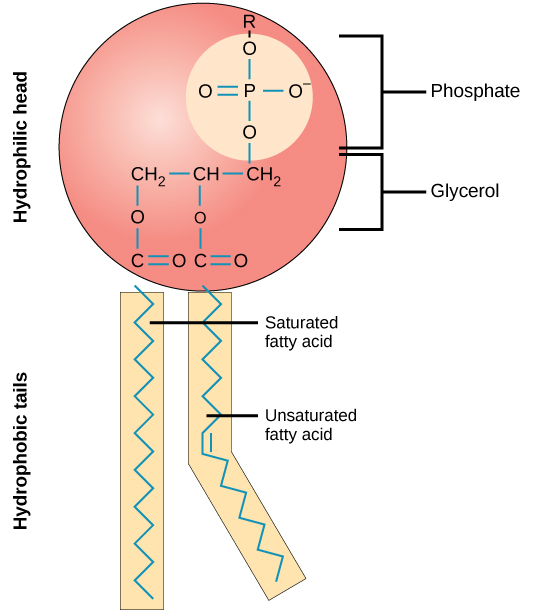Which Of The Following Is An E Ample Of A Lipid
Which Of The Following Is An E Ample Of A Lipid - Major types include fats and oils, waxes, phospholipids, and steroids. Gram for gram, they pack more than twice the caloric content of carbohydrates: Organisms use lipids to store energy and for many other uses. Fats are actually a type of lipid. The oxidation of fats and oils supplies about 9 kcal of energy for every gram oxidized, whereas the oxidation of carbohydrates supplies only 4 kcal/g. Web the resemblance to the plasmalemma was obvious, and the microscopic pictures provided the first evidence that the cell membrane is a bilayer lipid structure. Here, we’ll look in greater detail at some of the most important types of lipids, including fats and oils, waxes, phospholipids, and steroids. Integral proteins span the lipid bilayer, while peripheral proteins are more loosely associated with the surface of the membrane. Web this vitamin e radical can be converted back to its original form by a hydrogen donor. What are functions of fats in living organisms?
Saturated fatty acids and unsaturated fatty. Fats are made up of fatty acids and either glycerol or sphingosine. Most of the fats found in food are triglycerides, cholesterol, and phospholipids. Web study with quizlet and memorize flashcards containing terms like a lipid is any substance of biochemical origin that is, which if the following is not a biochemical function classification for lipids?, which of the following statements concerning fatty acids is correct? Major types include fats and oils, waxes, phospholipids, and steroids. Vitamin e also can affect enzyme activity. Neutral or true fats 2.
College students require optimal brain function, which is supported by fatty fish and walnuts. Lipid molecules consist mainly of repeating units called fatty acids.there are two types of fatty acids: Lipids are a diverse group of hydrophobic compounds that include molecules like fats, oils, waxes, phospholipids, and steroids. Fats are actually a type of lipid. Major types include fats and oils, waxes, phospholipids, and steroids.
Web the lipids are a large and diverse group of naturally occurring organic compounds that are related by their solubility in nonpolar organic solvents (e.g. Similar to water molecules c. Web lipids are one of the important biological macromolecules that have diverse functions and structures. A) wax b) triacylglyceride c) eicosanoid d) steroid e) sphingolipid, which of the following is not a lipid?, which of the following is not a. Lipids are a diverse group of hydrophobic compounds that include molecules like fats, oils, waxes, phospholipids, and steroids. Lipids are a major class of biochemical compounds that includes oils as well as fats.
Openstax is part of rice university, which is a 501 (c) (3) nonprofit. Web study with quizlet and memorize flashcards containing terms like what type of lipid is the compound shown here classified as? Web the lipids are a large and diverse group of naturally occurring organic compounds that are related by their solubility in nonpolar organic solvents (e.g. Fats are made up of fatty acids and either glycerol or sphingosine. Lipids are a diverse group of hydrophobic compounds that include molecules like fats, oils, waxes, phospholipids, and steroids.
Lipids are a class of macromolecules that are nonpolar and hydrophobic in nature. Major types include fats and oils, waxes, phospholipids, and steroids. Give today and help us reach more students. Web membrane lipids may be classified as phospholipids, glycolipids, and/or sphingolipids.
Saturated Fatty Acids And Unsaturated Fatty.
Web fats and oils, found in many of the foods we eat, belong to a class of biomolecules known as lipids. Lipids are a major class of biochemical compounds that includes oils as well as fats. Give today and help us reach more students. Web our mission is to improve educational access and learning for everyone.
Gram For Gram, They Pack More Than Twice The Caloric Content Of Carbohydrates:
What is the molecular structure of phospholipids, and what is the role of phospholipids in cells? The abundance of nonpolar functional groups give lipids a degree of hydrophobic (“water. Web lipids are one of the important biological macromolecules that have diverse functions and structures. Fats are actually a type of lipid.
The Following Year, Bangham, His Colleague Malcolm Standish, And Gerald Weissmann, An American Physician, Established The Integrity Of This Closed, Bilayer Structure And Its Ability To.
Lipid molecules consist mainly of repeating units called fatty acids.there are two types of fatty acids: Lipids are a class of macromolecules that are nonpolar and hydrophobic in nature. Major types include fats and oils, waxes, phospholipids, and steroids. Here, we’ll look in greater detail at some of the most important types of lipids, including fats and oils, waxes, phospholipids, and steroids.
What Are The Four Major Types Of Lipids?
Nonpolar molecules, all of the following are examples of lipids except. Web this vitamin e radical can be converted back to its original form by a hydrogen donor. Web study with quizlet and memorize flashcards containing terms like what type of lipid is the compound shown here classified as? The lipids are a large and diverse group of naturally occurring organic compounds that are related by their solubility in nonpolar organic solvents (e.g., ether, chloroform, acetone and benzene) and general insolubility in water.






